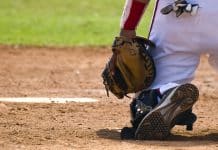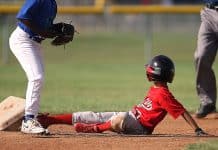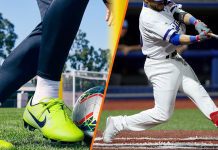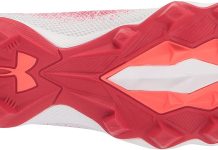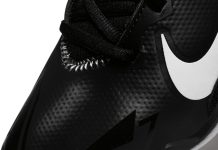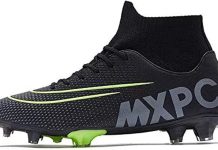Football cleats come in a variety of styles and designs, all with the goal of enhancing player performance on the field. From studs to blades, turf to indoor, each type of football cleat serves a specific purpose and is tailored to different playing surfaces. In this article, we’ll explore the various types of football cleats available, helping you understand which ones are best suited for your game. So, whether you’re a budding soccer star or a seasoned pro, get ready to step up your game with the right pair of football cleats. Football cleats are essential for any player looking to excel on the field. They provide traction and stability, allowing players to make quick cuts and movements with ease. However, with so many different types of football cleats available, it can be overwhelming to choose the right pair. In this article, we will explore the different types of football cleats and help you determine which ones are best suited for your playing style and needs.
Molded Cleats
Molded cleats are the most common type of football cleats, and for good reason. These cleats feature studs that are permanently attached to the outsole, providing reliable traction on a variety of playing surfaces. Molded cleats are ideal for grass fields, as they are designed to dig into the turf and prevent slippage. They are also versatile, as they can be used on natural grass, artificial turf, and even hard ground. The studs on molded cleats are typically made of rubber or plastic, providing durability and long-lasting performance.
Detachable Cleats
Detachable cleats offer players the flexibility to adjust their stud length based on field conditions. These cleats feature studs that can be unscrewed and replaced with different lengths, allowing players to customize their traction. Detachable cleats are popular among professional players and those who frequently play on different field surfaces. They excel on natural grass, as players can use longer studs for wet or soft conditions, and shorter studs for dry or hard surfaces. However, it’s important to note that detachable cleats are not allowed in all leagues and competitions, so be sure to check the rules before investing in a pair.
Turf Shoes
Turf shoes, also known as turf cleats or turf trainers, are specifically designed for playing on artificial turf surfaces. These cleats feature a flat outsole with numerous small rubber studs or nubs, providing excellent grip and traction on turf. Turf shoes also typically have a lower profile, which helps players maintain stability and balance on the turf. These cleats are ideal for training on artificial turf or playing games on turf fields, as they minimize the risk of slipping and offer superior grip on these surfaces. However, it’s important to note that turf shoes should never be worn on natural grass, as the rubber studs can damage the field and increase the risk of injury.
Indoor Shoes
Indoor shoes, as the name suggests, are designed for playing football on indoor surfaces such as gym floors and indoor courts. These shoes have a non-marking rubber outsole, which prevents leaving scuff marks or damaging the playing surface. Indoor shoes also have a low profile and provide excellent grip on smooth indoor surfaces. They are lightweight and often feature additional cushioning for comfort and support during fast-paced indoor games. Whether you’re playing futsal or indoor football, having the right pair of indoor shoes will enhance your performance and keep you agile on the court.
Artificial Turf Shoes
Artificial turf shoes, also known as astro turf shoes or AG (Artificial Grass) cleats, are designed specifically for playing on artificial grass surfaces. These shoes feature a unique pattern of small, evenly spaced rubber studs or flat, stubby rubber outsoles. This design provides optimal grip and traction on artificial turf, preventing players from slipping and allowing for quick acceleration and deceleration. Artificial turf shoes also offer excellent durability, as the outsole is resistant to the abrasive nature of artificial grass. If you frequently play on artificial grass fields or have access to an AG training facility, investing in a pair of artificial turf shoes is a wise choice.
Specialized Position Cleats
In addition to the various playing surfaces, football players also have the option to choose cleats designed for their specific position on the field. Different positions require different types of movements and have unique demands that can be addressed by specialized cleats. For example, linemen often opt for cleats with additional ankle support and reinforced toe caps to provide stability and protection during high-impact plays. On the other hand, wide receivers and running backs may prefer lightweight and agile cleats that enhance speed and agility. Quarterbacks may prioritize cleats with excellent traction to prevent slippage when dropping back to throw. By considering your position and playing style, you can choose cleats that optimize your performance and enable you to excel in your role on the team.
Low Top Cleats
Low top cleats have gained popularity in recent years due to their lightweight construction and flexibility. These cleats offer increased maneuverability and a greater range of motion compared to their higher-top counterparts. They are ideal for players who prioritize speed and agility, as they allow for quick cuts and changes in direction. Low top cleats also provide a more natural feel and are often praised for their comfort. However, it’s important to note that low top cleats offer less ankle support compared to mid or high top cleats, so players with a history of ankle injuries should take this into consideration when making their selection.
Mid Top Cleats
Mid top cleats combine some of the benefits of low top and high top cleats, making them a popular choice among many football players. These cleats provide a balance between ankle support and agility. The mid top design extends above the ankle, offering a bit more stability and support compared to low top cleats. This added ankle support can be beneficial for players who have experienced ankle injuries or are looking for additional protection on the field. Mid top cleats provide a good compromise between speed and stability, making them suitable for a wide range of players and positions.
High Top Cleats
High top cleats are the tallest of the three options and offer the most ankle support and stability. These cleats extend well above the ankle, providing ample support and protection for players. High top cleats are popular among linemen and other players who engage in physical and high-impact plays. They provide added stability during lateral movements and can help prevent ankle injuries. However, it’s important to note that high top cleats may restrict mobility and agility to some extent. Players who prioritize ankle protection and stability over speed and maneuverability may find high top cleats to be the best choice for their needs.
Metal Cleats
Metal cleats, also known as screw-in cleats, are designed for maximum traction and grip. These cleats feature studs made of metal, usually aluminum, which can be screwed into the outsole of the shoe. Metal cleats provide exceptional traction on soft and muddy surfaces, as the sharp metal studs can penetrate the ground and provide stability. They are often preferred by professional players and those who play in wet and muddy conditions. However, it’s important to note that metal cleats are not allowed in all leagues and competitions due to safety concerns. Before using metal cleats, always check the rules and regulations of your league or organization to ensure compliance.
In conclusion, the world of football cleats offers a wide array of options to meet the needs of every player. From molded and detachable cleats to specialized position cleats and different top heights, there is a perfect pair for everyone. Consider your playing surface, position, and playing style when choosing football cleats, as each type offers unique benefits and advantages. Whether you’re a beginner or an experienced player, investing in the right pair of football cleats will greatly enhance your performance and allow you to fully enjoy the beautiful game of football. So lace up, step onto the field, and make your mark with the perfect pair of football cleats!




